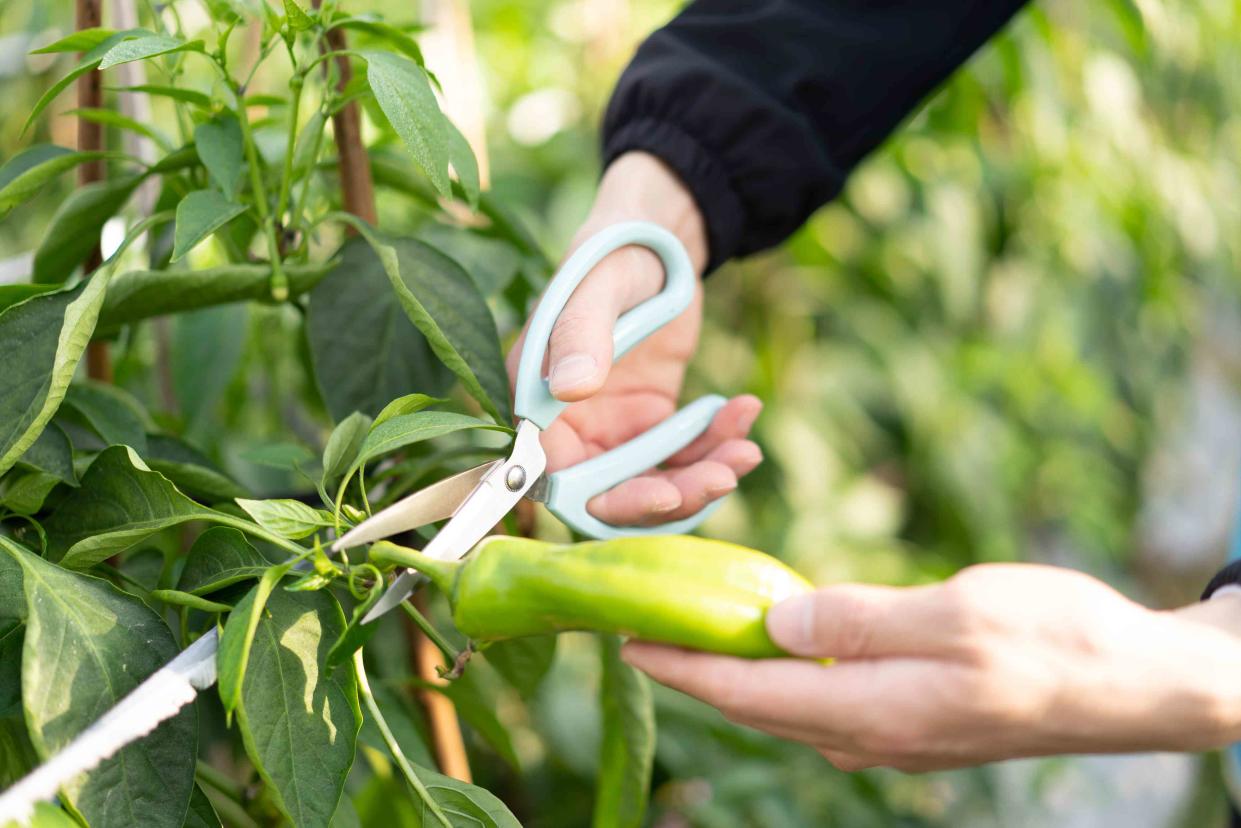How to Prune Pepper Plants the Right Way and Get a Huge Harvest

Weiquan Lin / Getty Images
Snipping and pruning pepper plants seems like a small action, but it's more important to their health than you might think. Pruning is an essential care requirement for pepper plants to increase airflow and production of fruit.
New gardeners can think about pruning like relaxing on an overcrowded beach. With throngs of people, it's much harder to stretch out and soak up the sun. Pruning pepper plants can allow them to fully "stretch" and transfer nutrients and sunlight to all the right branches.
We spoke to two experts about the benefits of pruning peppers and what good results it can lead to for your plant. From giving your plant a little breathing room to preventing harvest-ravaging diseases, experts share how to do it properly.
Meet the Experts
Zahid Adnan is a gardening expert and the founder of The Plant Bible, a guide for learning tips and care advice for all types of plants.
Ashleigh Smith is a degreed horticulturist with True Leaf Market, a Utah-based company selling certified organic, non-GMO, and heirloom seeds.
Why Pruning Pepper Plants Is Beneficial
There are a few reasons why pruning pepper plants is a useful thing to do. Adnan and Smith note these are the main perks of doing so:
Improves air circulation for the plants and gives them room to breathe.
Increases your potential harvest by encouraging flowering and production.
More nutrients can be directed to the fruiting branches where peppers are growing.
Boosts sunlight penetration and allows the right parts of the plant to receive light.
Prevents scraggy-looking plants and gives them a healthy, bushy appearance.
Leads to a healthier plant overall and increases its lifespan.
Want more gardening tips? Sign up for our free gardening newsletter for our best-growing tips, troubleshooting hacks, and more!
When Is the Best Time to Prune Pepper Plants?
A good rule of thumb for pruning peppers is to wait for early to mid-summer. If you prune too early, it can have the reverse effect on your plants, leading to fewer peppers and defeating your hard work.
Many types of peppers are planted in late spring as they need warm conditions to grow. With this in mind, Adnan says they need time to "establish a strong root system" and produce fruit.
You may want to start pruning peppers when they are about a foot tall, says Smith. Topping them by cutting off the top set of leaves can help the plant become bushier, eventually leading to increased blooming and fruit development.
Pruning Tip
Your cue to prune peppers is when flower and fruit production kicks into gear. Once your plant gets into this cycle, you can prune and do regular checks for any branches that look weak, diseased, or out of place.
4 Steps to Prune Pepper Plants
Following this step-by-step tutorial will allow your peppers to thrive:
Grab a Clean Pair of Pruners
Get your pruners ready by cleaning them so you can prevent the spread of diseases to your plant. If you don't have a great set of pruners, sharp scissors or a knife will work, too.
Single Out Specific Branches
Adnan says to focus on removing branches that are overcrowded or ones looking a little worse for wear (they could be yellowing or diseased, for instance).
Aim for an open, vase-like shape for optimal light penetration and air circulation. Aside from these types of branches, he says to get rid of "suckers," or the near-microscopic shoots that might be poking out of the leaf axils, especially those growing below the first set of flowers.
Cut Near the Node
Smith says to cut near a "connection point" or node. This is the knobby part where stems branch out from. Cutting here is the best way to guarantee a healthy recovery.
Allow the Plant to Heal
That's it! Now give your plant time to heal. If you've accidentally cut too far away from the node, occasionally check for signs of poor health, says Smith, since a mid-branch cut can lead to an "increased risk of disease entry and a longer recovery time."
Frequently Asked Questions
Do pepper plants need to be pruned?
Yes, pruning pepper plants is essential for their health and leads to more flowering and fruiting. Pruning gives the plant space to breathe, directs nutrients to the right places, and allows it to get enough sunlight.
Should pepper plants be topped?
Yes, topping your pepper plant prevents a scraggly appearance, makes it bushier, and contributes to a plant that fruits successfully.
When should I start pruning my peppers?
You should begin pruning peppers when they're between 12 inches and 18 inches tall. After planting, they need to develop a strong root system, so early to mid-summer is a good time.
Read Next: How to Prune Trees and Plants
Read the original article on The Spruce.

